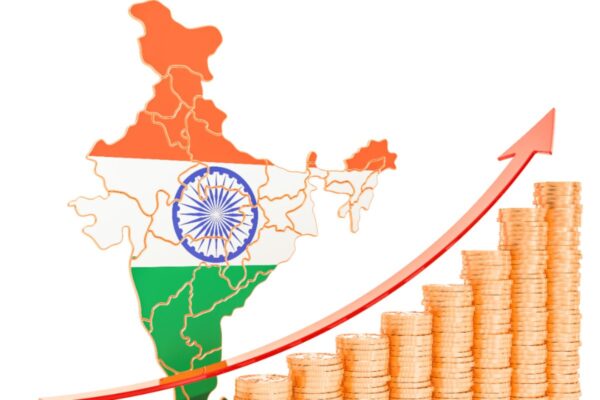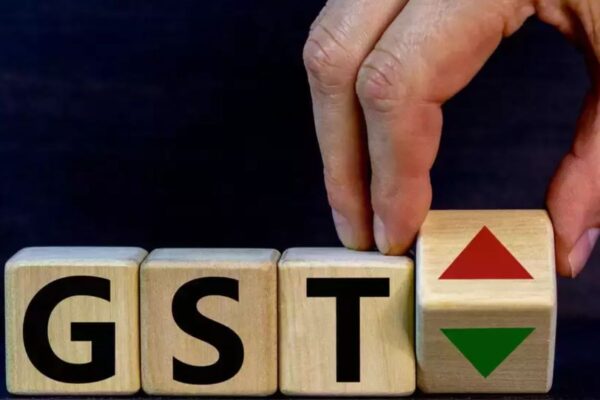India Economic Structure, What contributed to the robust growth of India’s Economy?

India’s economic structure, what is the robust growth of the Indian economy?
Given the likelihood of an effective global recession, India needs to carefully create an economic plan that inspires confidence. In its August economic assessment, India’s ministry of finance struck a positive note by declaring that GDP is “strong” and inflation is “under control.” Then, it perfectly modified its confidence by saying that “there is no room for complacency.” It will undoubtedly be a challenging year for policymaking, in all honesty.
To combat inflation, central banks around the world plan to sharply increase interest rates. Interest rate growth may cause the global economy to enter a recession due to supply concerns brought on by the Russia-Ukraine conflict and China’s downturn.
Developing countries that have taken on excessive amounts of dollar debt may face financial instability due to higher interest rates, which will cause issues with exchange rates. All of this will impact our growth potential. Undoubtedly, a recession will impede our export economy. Our subtle exposure to international borrowing makes financial instability less of a threat, but the exchange rate regime may be problematic.
The Reserve Bank of India (RBI) will have to make the difficult decision of either allowing the currency to “find its level” or strongly intervening to “control volatility” at the risk of loss of reserves.

The World Bank research entitled Is a Global Recession Imminent, which was published last week, provides some support for framing the different alternatives that we are now claiming. It presents three possible scenarios for emerging market developing economies using a global economic model (EMDEs).
Basis case: EMDEs modestly accelerate to 4.1% in 2023 and 4.3% in 2024, almost returning to pre-pandemic growth by 2024.
The scenario of a sharp slowdown: EMDEs decline to 3.3% in 2023 and only pick up to 4.1% in 2024.
Global recession scenario: EMDEs rapidly divert to 1.8% in 2023 and only rebound to 3.4% by 2024 in this scenario.
How does India work under this system?
For 2022–2033, the finance ministry’s judgement of “strong growth” is still mostly accurate. Although the RBI’s first projection of 7.2% may be lowered down below 7%, it is still considered healthy. However, this is mostly due to the first quarter’s 13.5% unusually high growth rate, which reflected a common base from the last year. With growth averaging barely 5% over the last three quarters, RBI had expected an important slowdown in upcoming quarters.
The World Bank study does not include expectations for India, although the IMF had forecast 6.1% growth for India in April and has been revising its estimates downward ever since. All of this means that the budget for the upcoming year needs to be built on a real GDP growth rate of 6 or higher. Over the medium run, higher growth can be our purpose.
We need not lose up on the purpose of reaching a $10 trillion GDP by 2030, for example, which asks for an average growth rate of about 8%. But a realistic aim must act as the foundation for the 2023–24 budget. Nominal GDP growth of approximately 10.5% might be possible if growth is set at 6% or higher and inflation at 4%.
Then, tax revenue estimates should be based on this information. Any assertion that taxes will continue to rise should be supported by specific tax reforms, such as passing the discussed GST reforms.
The extent of the fiscal deficit will then determine the growth of expenditures that can be budgeted. Because the central government’s fiscal deficit has been significantly higher than the goal we set years ago, this is a weak point. Budget observers will anticipate actions to put the deficit under believable control now that the epidemic is behind us, even though it was a valid justification for this divergence.
In this framework, we could seek to reduce the central government deficit over three years too, say, 3.5% of GDP. Over time, a sizable fiscal correction is always attained. This might include an increase of 0.5 percentage points in 2023–2024 and a further increase of 2.5 percentage points during the next two years.

It would be advantageous to presume the finance ministry’s previous practice of disclosing the deficit for the next two years after the budget year. Since 2024 will be an election year, the normal budget won’t be released until after the results are in, but setting a respectable financial goal in advance is an important signal.
There will be pressure to increase public investment to enhance demand and achieve faster growth if the budget’s growth target is revised downward to a more reasonable 6%+ for the next year. There is a need for increased public investment, particularly in the newest climate change-related fields, but this need should be met by reducing wasteful spending.
A strategy to increase investment that does not worsen the budget deficit is through private investment. When the Finance Minister recently interacted with Indian businesspeople, she brought up this problem and questioned why the private sector was not investing despite corporate tax rates being dropped to levels competitive with other nations.
Significant investments have been announced by some large houses. This is fantastic, but a few major announcements won’t address the root cause of a much wider slowdown in private sector investment, notably in the home sector, which includes agricultural and small business investment.
This broader downturn may be a result of a substantial budget imbalance that is discouraging private investment. At about 11% of GDP, the combined deficit of the federal government and the states dwarfs all home sector savings. A decrease in this deficit would make it possible to fund the expansion of the private sector.
The need for this compression would increase if the lack of funding for startups, which are a major asset of India’s economic scenario and heavily rely on non-bank capital from international markets, is caused by the tight liquidity conditions in global markets.
If the global economy experiences a sudden slowdown, exports will be an issue. The rupee should depreciate for this good reason. Exporters have already stated that the current currency drop does not help because their rivals’ currencies have plummeted considerably more. Although they are looking for additional tax breaks, a lower rupee would be a better choice.
Longer-term initiatives that strengthen export-related infrastructure and logistics must be used to encourage exports. The many free trade agreements that are currently being negotiated should be rapidly concluded.
Also, we ought to reconsider our previous opposition to the trade component of the Indo-Pacific Economic Framework. These actions are required if we want our exports to profit from the current global shift away from China.
Exports might not increase right away, but this will show markets that macroeconomic policy is being developed to cope realistically with the new reality that is emerging all around us.
The essential component of every crisis management approach is confidence. Based on our macroeconomic balance and the advancement of the reform-implementation process, we should provide a balanced plan that inspires confidence. What is important is not only making announcements but carrying them out.
edited and proofread by nikita sharma




